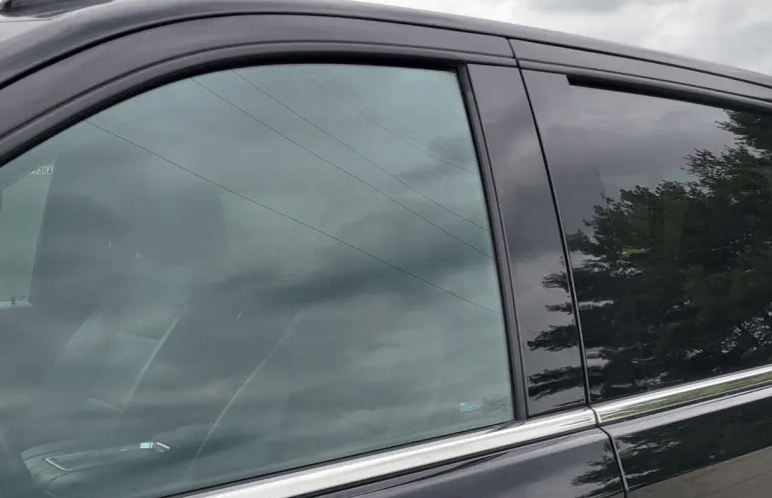
Unveiling the Top Choices for the Darkest Legal Tint in Colorado
Colorado entangles unique statutes that weave a complex web around the tinting of vehicle windows. These laws are definitive, tripping with clear stipulations regarding permissible boundaries. For every vehicle owner, the unraveling and digestion of these rules is imperative – a shield against unintentional transgressions and an assurance for road safety. The state’s mandates lean heavily on defining the darkest legal tint in Colorado; this barometer isn’t simply gauged by aesthetics but rather hangs in balance between privacy and visibility considerations.
Adherence to Colorado’s darkest allowable window tint emerges as a critical point – overly dark tints can dramatically plummet visibility under certain conditions, potentially nudging towards precarious situations on the asphalt ribbons that crisscross our lives. State regulations unfurl themselves to mark out legal confines about darkness levels further fleshed out into ‘tint percentage,’ denoting how much light should be allowed passage through a shaded car window. Henceforth, it remains incumbent upon every vehicle owner to ensure their window shading aligns seamlessly with these guidelines lest they find themselves facing hefty fines or penalties.
The Legal Limit for Window Tint in Colorado

In the realm of window tint enforcement, Colorado is known to have its own idiosyncratic rules. This might catch drivers off guard if they are not adequately informed about these specific regulations governing window tint levels. As such, it’s imperative for them to stay abreast with these legal limits.
The Visible Light Transmission, often reduced to its acronym – VLT – serves as a critical measure in this context. It is used to evaluate how much light a piece of window tint film will let through, thereby determining its darkness level. The majority of states utilize VLT as their primary parameter when setting forth regulations on tints; and Colorado is no exception.
Under the legal framework in place for sedans within Colorado boundaries, there are certain stipulations that must be adhered to. These dictate that the front side windows and the windshield should ideally exhibit a 70% or higher VLT rating – thus allowing enough light penetration for safe driving expeditions.
However, when one turns attention towards rear-side windows and backside glass panels, we see an absence of any specific VLT requirement. This essentially means they can assume darker shades without facing repercussions under law.
For vehicles falling into categories like SUVs and vans though, things take a slightly different turn: while maintaining similar requirements as sedans for front side windows and windshields (a minimum 70% VLT), there’s again no explicit restriction imposed on back side windows or rear-facing glass panels regarding their level of tinting.
Interpreting Colorado’s Tint Percentage Laws
In order to fully fathom the intricacies of Colorado’s Tint Percentage Laws, it is essential to comprehend that these rules are gauged in terms of Visible Light Transmission (VLT) percentage. This signifies the fraction of visible light permitted to permeate through the vehicle’s windows and windshield. The state administrators in Colorado have fastened precise VLT percentages for diverse windows, necessitating meticulous compliance by vehicle proprietors.
Moreover, the state decree dictates that front side windows must permit over 27% illumination inside; conversely, backside and rear windows may bear a minimal VLT of 27%. The windshield can only be tinted up to the topmost 4 inches from the manufacturer’s AS1 line which should not be less than 70% VLT. However, there exist exceptional stipulations for certain van and SUV categories; therefore it is crucial for drivers to examine their vehicle specifications in alignment with particular laws for seamless adherence.
Crucial Factors Affecting Tint Darkness in Colorado
In the labyrinthine process of settling on a tint darkness level, numerous elements must be given due thought. Paramount among these is the regulatory framework of Colorado state, which meticulously outlines permissible guidelines for tint darkness. The rules dictate that no less than 27% light transmission can be permitted through front side windows, while back side and rear windows may bear any degree of darkness. Essentially, this means that front-facing tinted windows must allow at least 27% light to permeate them. Consequently, legal standards emerge as an aspect demanding immediate priority in determining window tinting intensity for vehicles gracing Colorado streets.
Furthermore, the vehicle classification emerges as another compelling determinant affecting the choice of tint darkness within Colorado’s borders. Legal stipulations concerning acceptable tint levels differ between passenger vehicles and multi-purpose vehicles — with generally darker tints being tolerated for the latter category. These distinct percentages assigned by Colorado laws are designed to strike a balance between ensuring road safety and preserving vehicular aesthetics without compromise. Henceforth, it becomes incumbent upon every vehicle proprietor to weigh both statutory mandates against their vehicle’s categorization while deliberating over window-tinting decisions.
How to Ensure Your Vehicle’s Tint is Law-Compliant in Colorado
The prospect of aligning your vehicle’s tint with the intricate legal framework of Colorado may strike you as a daunting task, initially. However, by investing meticulous thought and vigilance towards the granularities of these legislations, this procedure morphs into a straightforward endeavor. The journey begins with comprehending the law in its entirety: Colorado permits up to 27% light transmission on front side windows, prohibits any form of tint for the windshield, while offering complete freedom regarding darkness levels for back side windows and rear windshield (provided your vehicle is equipped with side mirrors). A crucial point to remember would be referring consistently to these precise measurements – they serve as your primary guideposts steering you towards achieving compliance.
Navigating through this labyrinth further involves securing services from an accomplished professional tint installer – an instrumental component ensuring adherence to Colorado laws. These seasoned experts come armed with deep knowledge about state-specific rules, providing valuable guidance at every step. Moreover, it becomes vital to secure warranty coverage for the tint job – a safety net that could prove advantageous in future if unforeseen issues emerge. Lastly but importantly, bear in mind potential influences that might impact how dark your car’s tint appears; examples include low sunlight conditions and existing window features. Compliance isn’t solely about obedience to laws; it also aims at augmenting both aesthetic appeal and practical utility offered by your vehicle’s tint.
The Importance of Complying with Colorado’s Tint Laws
The implications of adhering to Colorado’s tint laws are profound, a fact often overlooked by a myriad number of motorists. Crafted with the primary aim of fortifying road safety, these regulations serve as a linchpin in mitigating accidents spurred by compromised visibility.
When vehicles sport tints that align legally, it curtails the strain on drivers’ eyes. This invariably leads to driving experiences that are not just safer but markedly more comfortable.
A cavalier disregard for these guidelines subjects motorists to potential repercussions and creates perilous conditions for them and other entities sharing the roadways. Windows tinted aptly strike an eloquent balance between visual appeal and safety precautions.
Accordingly, acknowledging and conforming to Colorado’s tint laws isn’t merely about sidestepping encounters with law enforcement. More pressingly, it revolves around nurturing responsible conduct on roads, augmenting the state’s dedication towards safety measures and prioritizing personal comfort whilst handling the steering wheel.
Penalties for Violating Tint Laws in Colorado
Transgressing the vehicular tinting mandates laid down by Colorado’s state might usher in a series of unwelcome repercussions. Initial infringements get classified as Class B traffic offenses, coupled with monetary penalties that could potentially escalate to $500. The state exerts these regulations stringently to promote safety on its highways, thus repeated transgressions may invite harsher sanctions.
Furthermore, it is pivotal to comprehend that these punitive measures envelop the expenses incurred for amending the unlawful tints too. This process may demand stripping off the existing tint and substituting it with one in line with state norms – an undertaking that could impose substantial financial stress. Hence this underscores why understanding and abiding by Colorado’s tint statutes is vital – not merely to sidestep fines but also thwart unnecessary outlay on remedial actions.
FAQ
The vehicle tinting laws in Colorado are primarily concerned with specific stipulations regarding the opacity and reflectivity of your car windows, a measure taken to ensure safety for both drivers and pedestrians.
As per Colorado’s edicts, permissible levels for window tint fluctuate based on which part of the vehicle houses the glass. For instance, more than 27% light must be allowed through windows at either side of the driver; however, rear windows can bear darker tints.
The peculiarity about percentages as dictated by Colorado’s tint legislation is that they denote how much light a given shade allows to permeate. A lower figure implies lesser light transmission hence a darker shade.
Factors impacting acceptable darkness levels include location of said glass within an automobile structure, specifics related to type material chosen for coloration purposes and whether it exhibits reflective properties or not.
The pathway to ensuring your vehicular shading remains within legal bounds involves professional installation and inspection carried out by licensed personnel. Additionally staying updated with any changes made pertinent to local automotive glazing rules would also prove beneficial.
A commitment toward abiding by these rules holds paramount importance when considering safety implications not only for yourself but other road users as well. Deviation from these norms may lead penalties including monetary fines and demerit points being added onto driving records.
The severity of penalties for violating shading laws in Colorado can range from minor infractions to more serious charges. The precise retribution is contingent upon the gravity of the violation but could encompass financial fines, points added onto your driving license and an obligation to remove any illegal shades applied.

